
</title><meta name="robots" content="noindex"> Unraveling the Mysteries of the Tanuki in Japanese Culture
If you're not already familiar with the topic, you may be wondering what exactly a tanuki is and why it's considered one of Japan's strangest myths. We're here to provide you with a comprehensive understanding of this fascinating creature and its significance in Japanese culture.
The tanuki (狸 or タヌキ), also known as the Japanese raccoon dog, is a fascinating creature with a long history in Japanese folklore and mythology. While it may resemble a raccoon or dog, the tanuki has its unique features and characteristics that make it stand out from other animals.
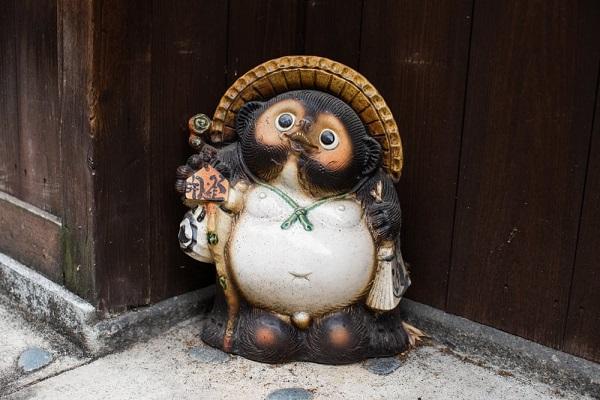
In this article, we'll explore the tanuki's physical characteristics, its role in Japanese culture and mythology, and the supernatural powers and abilities that have been attributed to it over the centuries. We'll also discuss the continued importance of the tanuki in modern Japan, including its impact on pop culture and its significance in Japanese tourism.
Whether you're a fan of Japanese culture, mythology, or simply curious about unique creatures, our article on "Tanuki: Japan's Strangest Myth" is sure to provide you with valuable insights and an engaging read. So, let's dive in and explore the mysterious world of the tanuki!
What is a Tanuki?
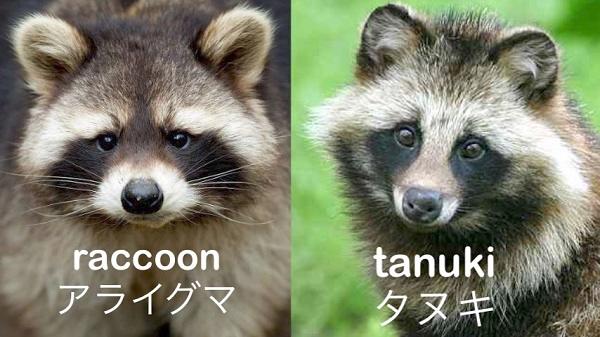
A tanuki, also known as a Japanese raccoon dog, is a mammal native to Japan and is part of the canid family. Physically, they are known for their distinctive markings, which include a mask-like pattern around their eyes, short legs, and a fluffy tail. Tanuki are primarily nocturnal and are known for being solitary animals, although they are sometimes found in pairs or small groups.
In terms of their natural habitat, tanuki can be found in a wide range of environments, including forests, mountains, and urban areas. They are also known for their adaptability and ability to thrive in various habitats.
While tanuki are considered to be a type of wild dog, they are also associated with supernatural and mythological powers in Japanese culture. These mythical abilities, which we will explore in more detail later in the article, have contributed to the tanuki's continued significance in Japanese folklore and popular culture.
The Tanuki's Role in Japanese Culture
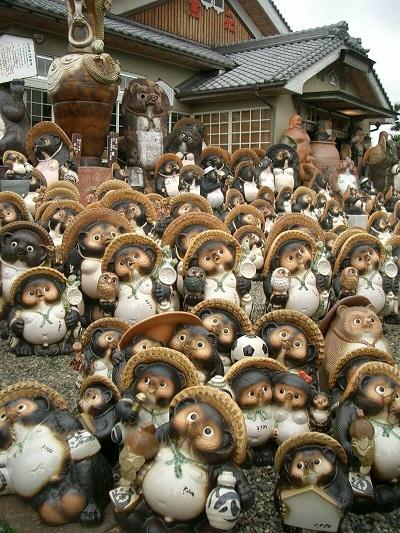
The tanuki has played a significant role in Japanese culture and has been featured in various forms of art and literature for centuries. In Japanese folklore and mythology, the tanuki is often portrayed as a mischievous and playful creature, using its supernatural powers to play tricks on humans.
In art, the tanuki is a popular subject, appearing in various forms such as paintings, sculptures, and pottery. The tanuki is often depicted as a friendly and comical figure, wearing a straw hat and carrying a bottle of sake. These depictions highlight the tanuki's playful and mischievous nature.
In literature, the tanuki has been featured in numerous works, including classic Japanese literature such as "The Tale of Genji" and the "Heike Monogatari." In more recent times, the tanuki has appeared in modern Japanese literature, including popular manga and anime series.
The tanuki's role in Japanese culture also extends to its significance in Shintoism, where it is considered a messenger of the gods. In this context, the tanuki is revered for its supernatural abilities and is sometimes depicted in a more serious light.
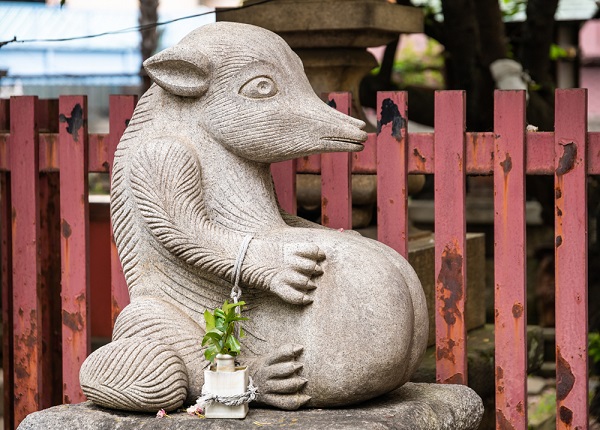
In modern times, the tanuki's influence can be seen in Japanese pop culture, where it is a popular character in video games like Animal Crossing, television shows, and other media. Its image can also be found on various types of merchandise, from toys and clothing to food and beverages.
Overall, the tanuki has had a significant impact on Japanese culture, playing a central role in folklore, art, literature, and popular culture. Its unique characteristics and mischievous personality have captured the imagination of the Japanese people for centuries and continue to do so today.
The Tanuki's Mythical Powers
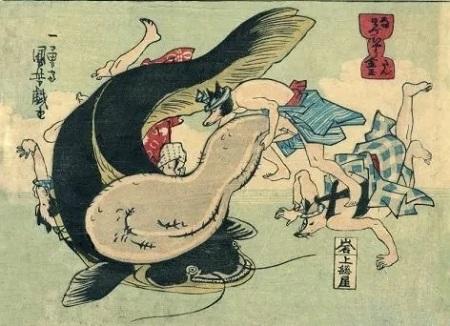
The tanuki is known for its mythical powers, which have contributed to its continued significance in Japanese culture. One of the most notable of these powers is the tanuki's ability to shape-shift, transforming itself into other animals or even inanimate objects. This ability has been depicted in various forms of art and literature and is a common theme in Japanese folklore.
In addition to its shape-shifting abilities, the tanuki is also associated with its influence over the elements, particularly water. In Japanese mythology, the tanuki is believed to have the power to control rain and water, with some stories even suggesting that they can create entire bodies of water.
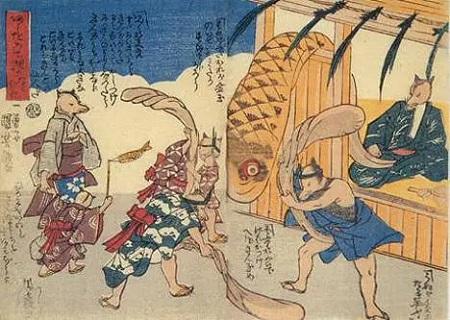
The tanuki is also known for its mischievous and playful nature, and it is believed to use its supernatural powers to play tricks on humans. For example, it may shape-shift into a tea kettle or other household object to trick people into thinking they are interacting with an inanimate object. In other stories, the tanuki may use its shape-shifting abilities to assume the form of a beautiful woman, luring unsuspecting men into dangerous situations.
Overall, the tanuki's mythical powers are an important part of its significance in Japanese culture. Its shape-shifting abilities, influence over the elements, and mischievous nature have contributed to its portrayal in various forms of art and literature and have made it a beloved character in Japanese folklore.
The Eight Symbolic meanings of Tanuki statue
The Tanuki statue's image has evolved into something that is quite different from what it actually is. The statue's characteristics, known as "hassoengi" (八相縁), stand for eight lucky symbols.
- A hat to shield you from harm and unplanned incidents.
- To make the best decisions, Tanuki have large eyes to study and pay attention to everything around them.
- A happy face is a symbol for kindness and friendliness.
- The sake (rice wine) in their wine bottle is Japanese sake, which is intended to teach people the virtues and character of someone who doesn't have to worry about food.
- Cash in and out transactions are entered in the book. When borrowing money and attempting to create a relationship based on trust, this is a crucial component.
- A steady, calm, and bold attitude toward addressing events is symbolized by the belly drum.
- The "golden bags" stand for luck that will continue to improve and bring in more and more wealth or fortune.
- Their large tail suggests stability by aiding in maintaining the body's equilibrium. It also symbolizes the conclusion, therefore it can also signify that you want things to come to a strong conclusion.
The Tanuki's Role in Modern Japan
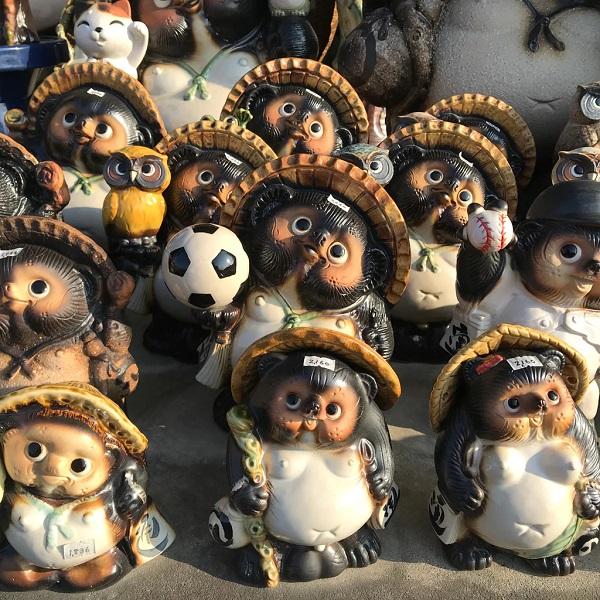
Despite its origins in ancient Japanese folklore and mythology, the tanuki continues to play a significant role in modern-day Japan. One area where the tanuki is particularly prominent is in Japanese pop culture. The tanuki is a popular character in video games, especially in Animal Crossing (Nook), anime, and manga, often portrayed as a cute, comical figure with exaggerated features, such as its large testicles, which are considered a symbol of good fortune and prosperity.
The tanuki's influence can also be seen in Japanese tourism. Statues of the tanuki can be found in various parts of Japan, particularly in areas with a rich history of tanuki folklore. Some areas have even adopted the tanuki as a sort of mascot, with images of the creature appearing on local products and souvenirs.
In addition to its presence in pop culture and tourism, the tanuki is also an important symbol in Japanese advertising. The tanuki's playful and mischievous nature has been used to promote various products, from snacks and drinks to household appliances and financial services.

The continued relevance of the tanuki in modern-day Japan is a testament to its enduring appeal and cultural significance. Despite the many changes that Japan has undergone in recent years, the tanuki remains a beloved character that continues to capture the imagination of the Japanese people and visitors to the country alike.
Conclusion
In conclusion, the tanuki is a fascinating and important creature in Japanese culture. We have explored the various aspects of the tanuki's significance, from its physical characteristics and natural habitat to its portrayal in art, literature, and pop culture. It has a lot of mythical powers associated with the tanuki, including its shape-shifting abilities and influence over the elements.
Through our exploration, it has become clear that the tanuki holds a special place in the hearts and minds of the Japanese people. Despite the many changes that have occurred in Japan over the centuries, the tanuki remains a beloved figure, with its influence continuing to be felt in various aspects of Japanese life, from art and literature to advertising and tourism.
In the end, the tanuki serves as a reminder of the importance of preserving and celebrating cultural traditions, even as the world around us continues to change. As we continue to explore and appreciate the many wonders of Japan, let us not forget the enduring legacy of the tanuki and its place in the rich tapestry of Japanese culture.




